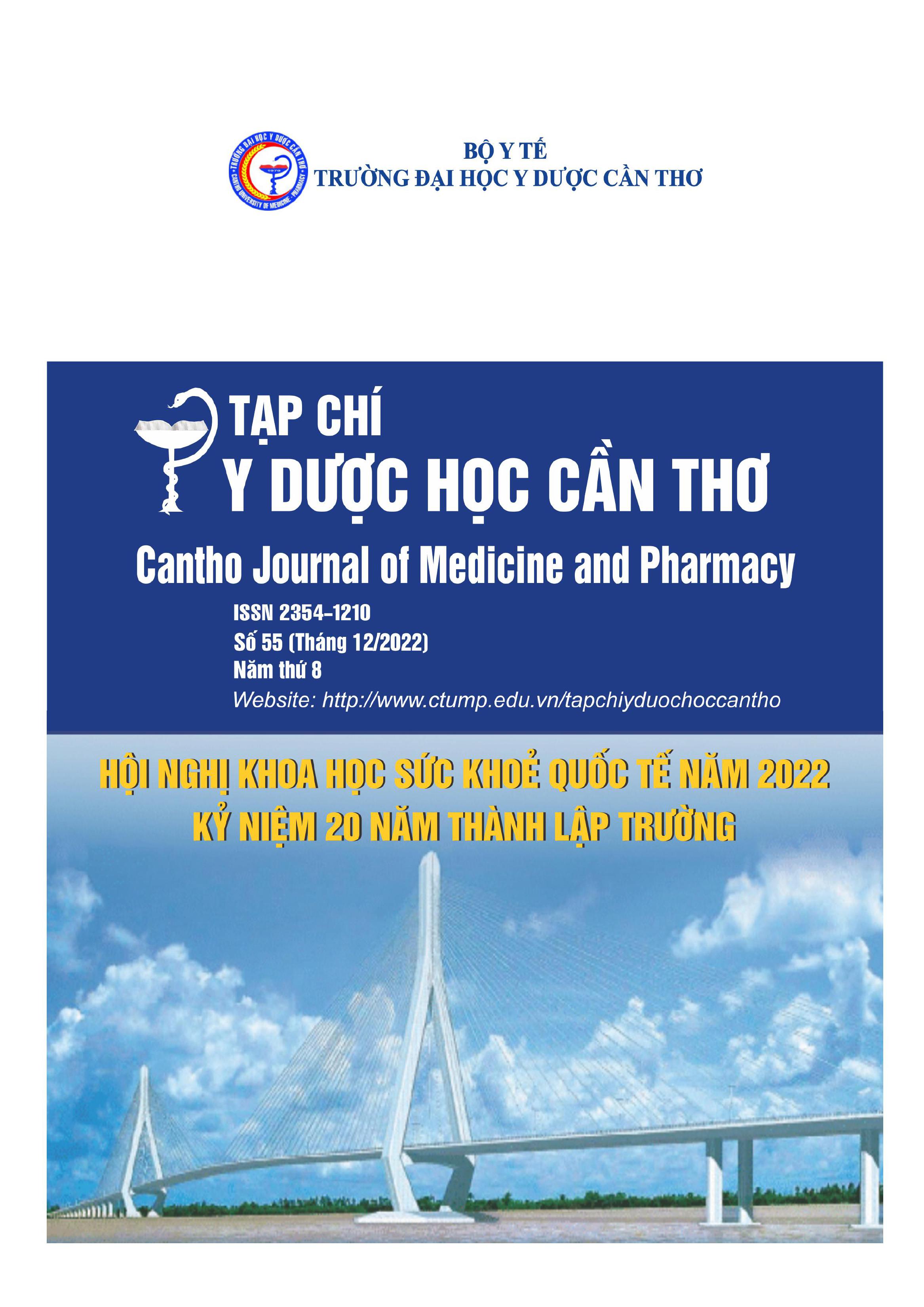THE OUTCOME OF IMPACTED MANDIBULAR THIRD MOLARS RELATING TO INFERIOR ALVEOLAR NERVE REMOVAL SURGERY USING PIEZOTOME AT CAN THO UNIVERSITY OF MEDICINE AND PHARMACY HOSPITAL
Main Article Content
Abstract
Background: Injury of the inferior alveolar nerve is one of the most concerned complications following mandibular third molars removal. Piezosurgery has been becoming more and more popular, especially in the mandibular third molars extraction procedure. Objective: To describe clinical, paraclinical features of mandibular third molars which were removed using Piezosurgery and evaluate the surgical outcomes. Materials and methods: Descriptive cross- sectional study was performed on 36 mandibular third molars which had close relationship to inferior alveolar nerve (according to cone beam computed tomography) were selected in this study. They were extracted using Piezosurgery. Clinical, paraclinical features and complications were recorded. Results: Before opperation, 75% of mandibular third molars in this study were diagnosed with an infection condition, 72.7% of them have partially erupted. The most popular relationship type between mandibular third molars and inferior alveolar nerve was type II, 77.8% (according to Qian Luo classification). The average ranges of mouth opening before surgery, 1 day, 3 days and 7 days postoperatively were 45.36 ± 3.54mm, 36.33 ± 4.77mm, 41.67 ± 4.72mm, 44.97 ± 3.52mm respectively. 2.8% of patients had moderate pain at the first day after procedure. 7 days postoperatively, 80.6% of patients felt no pain. Ipsilateral paresthesia was found in 1 patient after surgery and it disappeared 40 days later. There were no other complications recorded. Conclusion: Piezosurgery was an effective way for extraction mandibular third molars relating to inferior alveolar nerve.
Article Details
Keywords
Mandibular third molar, inferior alveolar nerve, Piezosurgery
References
2. Võ Thị Ngọc Hà (2018), Nghiên cứu đặc điểm lâm sàng, X quang và đánh giá kết quả điều trị bệnh nhân có răng khôn hàm dưới lệch , ngầm bằng phẫu thuật tại bệnh viện đa khoa tỉnh Hậu Giang năm 2017-2018, Luận án chuyên khoa cấp II Trường Đại học Y Dược Cần Thơ, Cần Thơ.
3. Nguyễn Minh Khởi (2019), Nghiên cứu đặc điểm lâm sàng, X quang và đánh giá kết quả nhổ răng khôn hàm dưới bằng tay khoan quay và máy Piezotome tại Bệnh viện Trường Đại học Y dược Cần Thơ, Luận Văn Thạc Sĩ, Trường Đại học Y Dược Cần Thơ, Cần Thơ, tr.41-60.
4. Lê Đức Lánh (2011), Phẫu Thuật Răng Miệng - Tập 1,2, Nhà xuất bản Y học, tr.49 - 148.
5. Phạm Hồng Loan (2014), Khảo sát mối liên quan giữa tư thế răng và biến chứng ở bệnh nhân nhổ răng khôn hàm dưới tại Bệnh viện Trường Đại học Y Dược Cần Thơ, Luận văn tốt nghiệp Bác sĩ Răng hàm mặt, Trường Đại học Y Dược Cần Thơ, Cần Thơ.
6. Nguyễn Hoàng Nam (2019), Nghiên cứu đặc điểm lâm sàng, X quang và đánh giá kết quả phẫu thuật cắt thân răng khôn hàm dưới mọc lệch/ngầm tại Bệnh viện Trường Đại học Y Dược Cần Thơ năm 2018-2019, Luận án chuyên khoa cấp II, Trường Đại học Y dược Cần Thơ, Cần Thơ.
7. Hà Nhật Phương (2019), Nghiên cứu đặc điểm lâm sàng, X quang và đánh giá kết quả điều trị phẫu thuật răng khôn hàm dưới mọc lệch ngầm dựa vào sự thay đổi mô nha chu kế cận tại Bệnh viện Trường Đại học Y Dược Cần Thơ năm 2017-2019, Luận văn bác sĩ nội trú, Trường Đại học Y Dược Cần Thơ, Cần Thơ.
8. Lâm Nhựt Tân (2018), Nghiên cứu đặc điểm lâm sàng, x quang và đánh giá kết quả điều trị bệnh nhân có răng khôn hàm dưới lệch được phẫu thuật bằng kỹ thuật vạt bao và vạt tam giác tại trường Đại học Y Dược Cần Thơ, năm 2017-2018, Luận án chuyên khoa cấp 2, Trường Đại học Y Dược Cần Thơ, Cần Thơ, tr.3-20.
9. Feras Y., Steen S.P. (2012), Cone Beam Tomography (CBCT) as a Diagnostic Tool to Assess the Relationship between the Inferior Alveolar Nerve and Roots of Mandibular Wisdom Teeth. Smile Dental Journal,7(3), pp.12-17.
10. Pritika S., et al. (2018), Comparison of surgical outcome after impacted third molar surgery using piezotome and a conventional rotary handpiece. Contemporary Clinical Dentistry, 9(2), pp. 318-324.
11. Qian L. , Wanglun D., Lan L., et al. (2018), Comparisons of the Computed Tomographic Scan and Panoramic Radiography Before Mandibular Third Molar Extraction Surgery. © Med Sci Monit; 24, pp.3340-3347.


